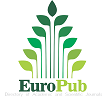A biojuridical reminder on the vulnerability and dignity of critical patients
Abstract
Today, the pandemic caused by COVID-19 has abruptly shown us a reality that no one escapes: the mystery of human nature that is death. Human life cannot be explained without death. And it is that the moment of death is as important as that of birth because it is part of the natural process of life. The truth is that the pandemic brings with it pain and suffering prior to death; and it is of such a lethality that, despite existing risk groups, we are all exposed to contagion.
The speed with which the virus spreads and the inability to contain its effects, has caused the death of millions of people around the world, which leads us to look at the places where death is faced on the front line. . But the most important thing is that it leads us to look at the fragility of life from another perspective.
Critically ill patients (that is, with severe deterioration in their organic functions due to diseases that can potentially be complicated by compromising life), keep their dignity intact and, being a fragile group in extreme circumstances such as a pandemic, leave evidence of that violate the dignity of people in the field of health care activity, for which we believe it is important to remember from a bio-legal perspective, the vulnerability of critically ill patients.
Downloads
References
ARCINIEGAS SALAMANCA, Y. (21 de Junio de 2020). América Latina: la corrupción alcanza niveles alarmantes en medio de la crisis el Covid-19. Obtenido de France24: https://www.france24.com/es/20200620-corrupcion-america-latina-covid19-coronavirus-malveracion
BALLESTEROS LLOMPART, J., & APARISI MILLARES, A. (2004). Biotecnología, dignidad y derecho: bases para un diálogo. EUNSA.
CICCONE, L. (2006). Bioética, historia, principios, cuestiones (2da ed.). Ediciones Palabra.
FRANKL, V. (1991). El hombre en busca de sentido (12 ed.). Ed. Herder.
GOMEZ SANCHO, M. (19 de Setiembre de 2015). Atención médica al final de la vida: conceptos y definiciones. Obtenido de Organización Médica Colegial y Sociedad Española de Cuidados Paliativos: http://www.medicosypacientes.com/sites/default/files/Documento%20Conceptos%20AtencionFinalVida%202015.pdf
HERRANZ, G. (1991). El respeto médico a la vida terminal. Servei de Documentació Montalegre.
HERRANZ, G. (1999). Ponencia en las Jornadas Internacionales de Bioética “Bioética y dignidad en una sociedad plural”. Universidad de Navarra. Pamplon.
HOYOS, I. M. (2005). De la Dignidad y de los Derechos Humanos. Editorial TEMIS.
JUAN PABLO II. (1995). Carta Encíclica, Evangelium Vitae, sobre el Valor y el Carácter Inviolable de la Vida Humana.
Léxico de bioética versión web. (31 de Mayo de 2000). Obtenido de https://www.unav.edu/web/unidad-de-humanidades-y-etica-medica/material-de-bioetica/lexico-de-bioetica
MELENDO, T., & MILLÁN-PUELLES, L. (1996). Dignidad:¿Una palabra vacía? EUNSA.
ORGANIZACIÓN MUNDIAL DE LA SALUD. (1990). Alivio del dolor y tratamiento paliativo en cáncer. Informe del comité de expertos. Informes técnicos.
PASSO, E. (2013). Bioética en el aula: cuando nuestros gestos de amor, cuentan. Ediciones Logos.
PONTIFICIO CONSEJO JUSTICIA Y PAZ. (2004). Compendio de Doctrina Social de la Iglesia.
PONTIFICIO CONSEJO PARA LA PASTORAL DE LOS AGENTES SANITARIOS. (1995). Carta de los Agentes Sanitarios. Vaticano.
RAMIRO GARCÍA, F. (2000). Técnicas de Asistencia a la Reproducción Humana, Valoración Ética. Grafite Ediciones.
SANZ, G. (1999). Diccionario Espasa de Medicina. Espasa Calpe.
SGRECCIA, E. (2009). Manual de Bioética I, Fundamentos y Ética Biomédica. Ed BAC.
SOCIEDAD ARGENTINA DE INFECTOLOGÍA. (17 de Junio de 2020). Obtenido de Elementos de Protección Personal en Covid19 Argentina: https://www.sadi.org.ar/institucional/comisiones-de-trabajo/comision-de-iacs-y-sp-inf-asoc-al-cuidado-de-la-salud-y-seguridad-del-paciente/item/1147-niveles-de-elementos-de-proteccion-personal
TURCHETTO, E. (2005). A qué llamamos paciente críticamente enfermo y cómo lo reconocemos. Revista del Hospital Privado de Comunidad, 8(2).
WASHBURN, J. (2002). Compasión y Bioética, Acta Bioethic. año X.
WORLD HEALTH ORGANIZATION. (2007). WHO, Palliative Care: Cancer control. Knowledge into action. Guide for Effective Programmes. Who Press. Obtenido de https://www.who.int/cancer/media/FINAL-Palliative%20Care%20Module.pdf?ua=1
The authors retain copyright.
This work is under international license Creative Commons Attribution 4.0.
The articles published by the scientific journal "Notes on Bioethics" of the Universidad Catolica Santo Toribio de Mogrovejo, Chiclayo Peru, can be shared through the international public license Creative Commons Attribution CC BY 4.0
























 LIBRARY USAT
LIBRARY USAT